Gristle Found in Grass Fed Beef
The meat aisle at your local supermarket is littered with labels—so you've probable noticed the term "grass-fed" and "grass-finished" on many cuts of blood-red meat. If y'all've heard all the buzz behind grass-fed beef, y'all probably already know that it'due south healthier than conventionally-raised meat. But, why is it better for y'all? And is the heftier toll tag of grass-fed meat really worth it?
To get the lowdown on why grass-fed and finished meats reign supreme, nosotros spoke to multiple experts who share everything you need to know before picking your adjacent grass-fed protein, whether it be a rib-middle, a burger, or beef jerky. Spoiler warning: shelling out extra cash for grass-fed meat is worth it. Discover out why—and then convince your family and friends to become on the grain-free bandwagon, besides!
One affair to note: The term "grass-fed" significantly differs from "grass-fed and grass-finished" meat. Considering the term "grass-fed" is no longer regulated by the FDA, manufacturers can feed their cattle grass at some point in their lives—just non for their unabridged lives—and deceptively characterization the meat "grass-fed." To reap all the benefits of grass-fed meat, the animal must be fed a grass diet (costless of grains) for their unabridged lives. If they're simply fed a grass diet for a portion of their lives and not for the entirety, the meat would be deemed grass-fed and grain-finished. The addition of "grass-finished" on a grass-fed label ensures that the brute only dined on greenery—as well as guarantees y'all're getting the utmost nutritious cut. While grass-fed, grain-finished meat isn't as wholesome as grass-fed and grass-finished, yous'd nevertheless reap more than benefits than eating conventionally-raised meat. Now, learn the differences of grass-fed (as well every bit grass-finished meat) against conventionally-raised meat.
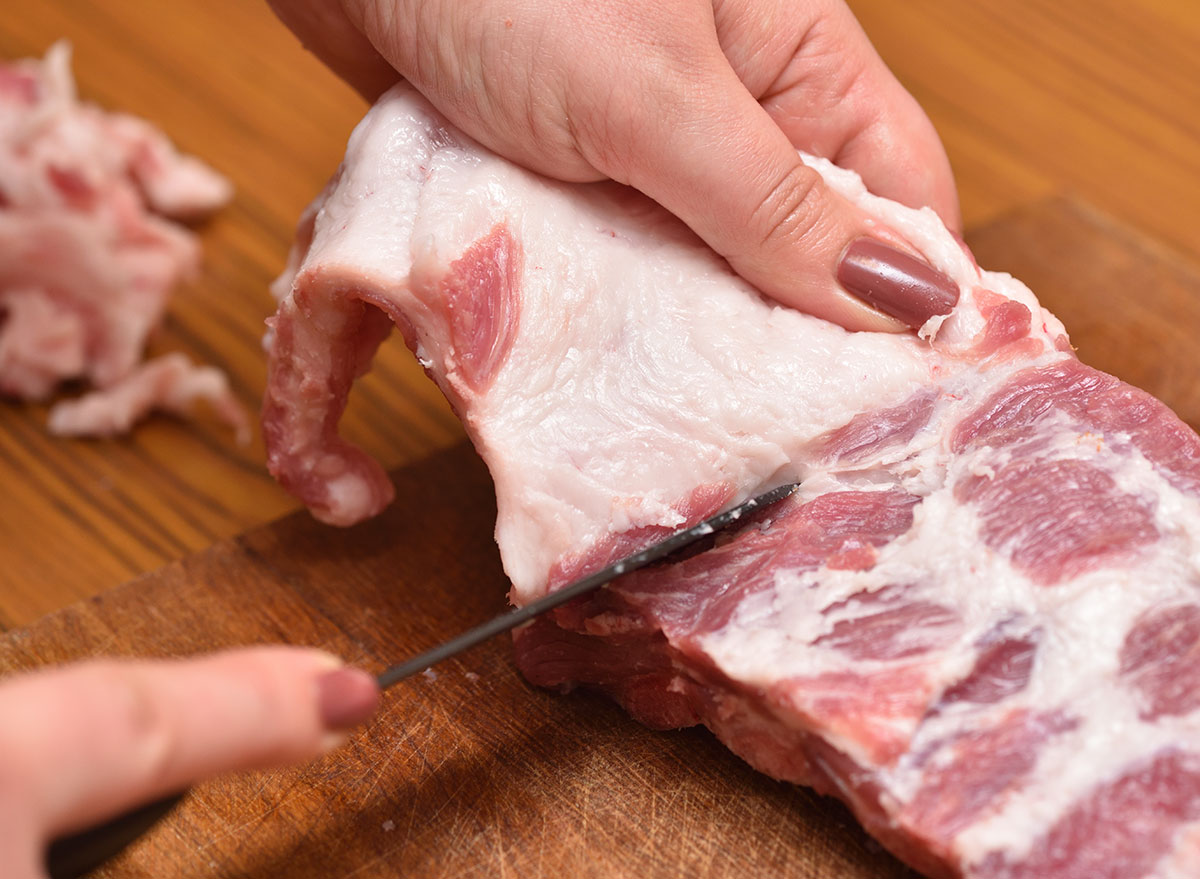
Not but is grass-fed meat more lean than its conventional counterparts, but it also contains higher levels of good for you fats. "Inquiry shows that grass-fed cows significantly improve the fatty acid composition of beef. Grass-fed meats are also richer in conjugated linoleic acid (CLA) and omega-3 fatty acids," Jessica Handy, RD, tells the states. Additionally, grass-fed meat boasts a more desirable omega-3 to omega-6 ratio—with a higher concentration of omega-3s to combat inflammation.
"Grass-fed animals have a higher concentration of α-linolenic acid and other omega-3s, while grain feeding results in college amounts of linoleic acid and other omega-6s," ChadClem, Managing director of Enquiry and Development at Applegate Natural & Organic Meats, tells us. Because the typical American diet is already loftier in omega-6s and low in omega-3s, a proportion that tin lead to inflammation, it is of import to supplement your diet with additional omega-3s—and grass-fed meat is a wonderful source.
What'southward more than, information technology's worth noting the differences in saturated fat limerick of grain-fed versus grass-fed meat, EstherBlum, MS, RD, CDN, CNS, tells u.s.a.. "At that place are three main types of saturated fat found in red meat: stearic acid, palmitic acid, and myristic acid. Grass-fed beef consistently contains a higher proportion of stearic acrid, which does not raise blood cholesterol levels. This higher proportion of stearic acrid means that grass-fed beef also contains lower proportions of palmitic and myristic acid, which are more likely to heighten cholesterol."
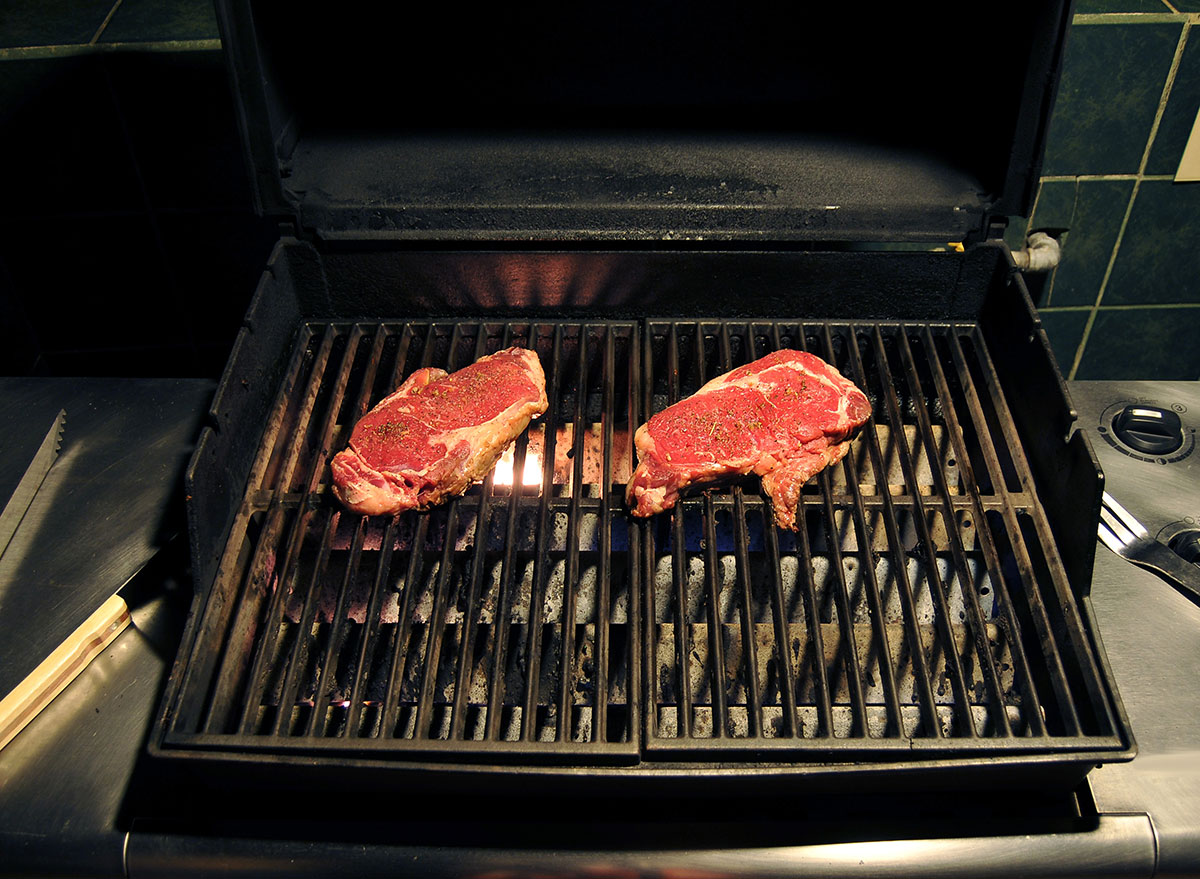
Grass-fed beef is an excellent source of protein—merely three ounces (the standard serving size of red meat) of grass-fed ground beef boasts about 18 grams of the musculus-edifice macro. "The amino acids are too more bioavailable than found-based protein sources," Handy says. Unlike most institute-based sources of protein, animate being proteins comprise all nine essential amino acids that the body cannot produce on its own and therefore has to obtain from food.

Glutathione (GT), is a new poly peptide identified in foods that has the profound ability to get rid of gratuitous radicals within the prison cell, Clem tells us. Since GT compounds are college in grass-fed beef than grain-fed, the meat can aid protect the cell from oxidized lipids or proteins, preventing DNA damage. What's more, "Grass-fed beef is besides higher in superoxide dismutase (SOD) and catalase (Cat)—which are coupled enzymes that work together equally powerful antioxidants—than beef from grain-fed cattle," Clem says.
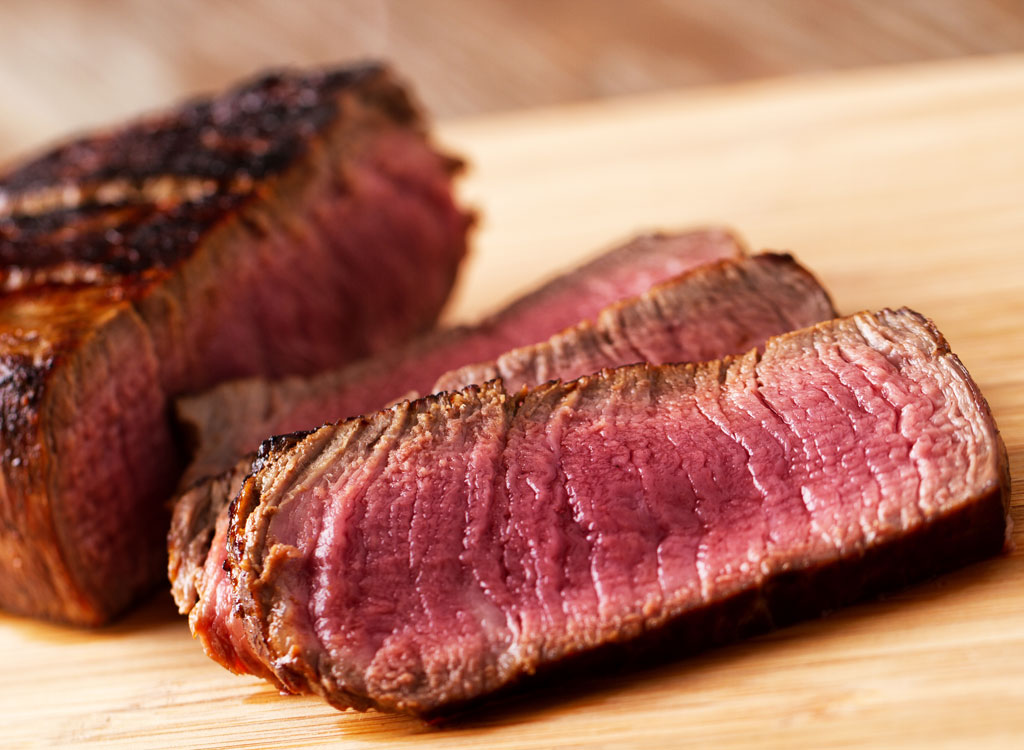
Cattle finished on grass accept higher levels of A-tocopherol (vitamin E) in the final meat product than cattle fed loftier-grain diets, Clem says, citing studies that show that grass-finished beef contains three times more than vitamin E, which acts as an antioxidant, than grain-fed. "Vitamin East helps filibuster the oxidative deterioration of the meat, which causes the meat to plow dark-brown in color." What's more than, grass-fed meat also contains college levels of vitamin A, which is benign for skin and heart health. "Cattle that graze on solely grasses produce raw meat with a yellowish tint in the fat due to the carotenoids in the grasses. When making hay products for grain-fed cattle, around eighty per centum of the carotenoid content can be destroyed," Clem adds.
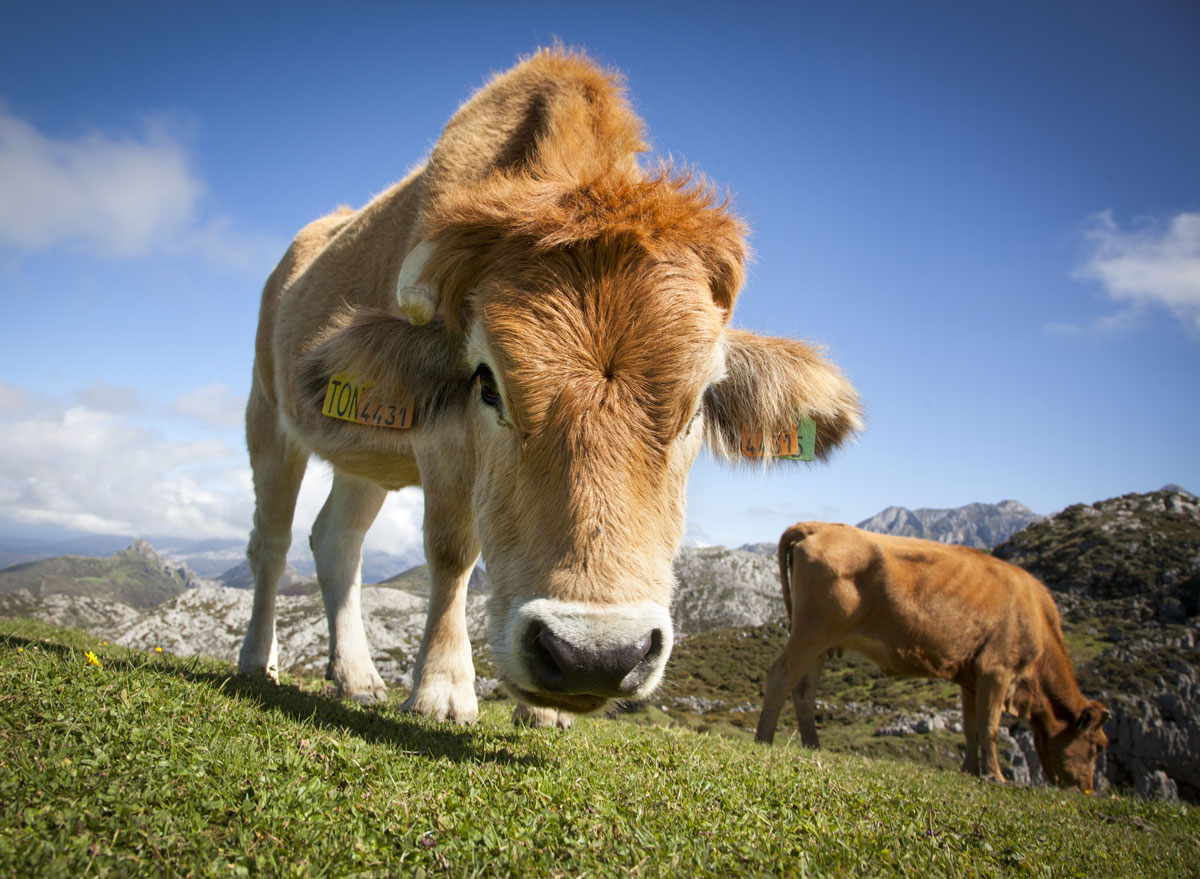
Biodiversity refers to the Earth's biological variety and the variety of organisms that call our planet home. "Plants, wild fauna, microorganisms, and fungi have evolved in a symbiotic relationship with grazing animals for thousands of years," Handy tells us. "When we mimic these natural systems with cattle, a term also known as 'biomimicry,' we see improvements in the biodiversity and environmental of the land."
"Well-managed cattle mimic the traditional patterns of wild herds by moving across grasslands, tilling and fertilizing the globe, aerating soils, and helping the grass to grow," Mike Murray, CEO of grass-fed meat brand Teton Waters Ranch, tells united states. "Holistic management of cattle promotes the mural to flourish as it would naturally, encouraging native species to stay in these habitats and create a more diverse ecosystem which in plow makes it more resilient. Considering 100 per centum grass-fed cattle are allowed to graze on a buffet of the best plants and grasses, they consume exactly what their trunk needs at the time." In plough, this nutrient-rich diet results in higher quality meat. "They become the nutrients from a more diverse diet, helping them to be healthier than feedlot-fed cattle. Healthy cows that swallow a various diet of natural grasses and plants produce better-tasting beef with added vitamins and minerals, making it more nutritionally dumbo," Murray says.

A Cornell study published in the journal Science shows that grain-fed cows are more susceptible to Due east. coli. "Most bacteria are killed by the acid of stomach juice, but East. coli from grain-fed cattle are resistant to strong acids," James B. Russell, a USDA microbiologist and kinesthesia member of the Cornell Department of Microbiology, explains in the study. "When people swallow foods contaminated with acid-resistant East. coli—including pathogenic strains similar O157:H7—the chance of getting sick increases." All the same, in that location is a solution: feeding the cattle hay merely five days earlier slaughter significantly decreased the amount of E. coli.
A large Consumer Reports study demonstrates that eating grass-fed meat instead of conventional decreases your risk of food poisoning and results in fewer antibody-resistant bacteria. Out of 300 samples of raw ground beef tested, researchers found that conventional beefiness was twice as likely to exist contaminated with superbugs than all types of sustainably-produced beef, noting that the most significant difference was seen between conventional and grass-fed beef. Only six percentage of grass-fed samples independent superbugs. Another study, published past the National Institute of Health, notes that feeding cattle grains may increment man infections with E. coli and that the pathogens from grass-fed animals are killed by an acid shock similar to the weather of the human tum, which would, therefore, cut your take a chance of getting East. coli.
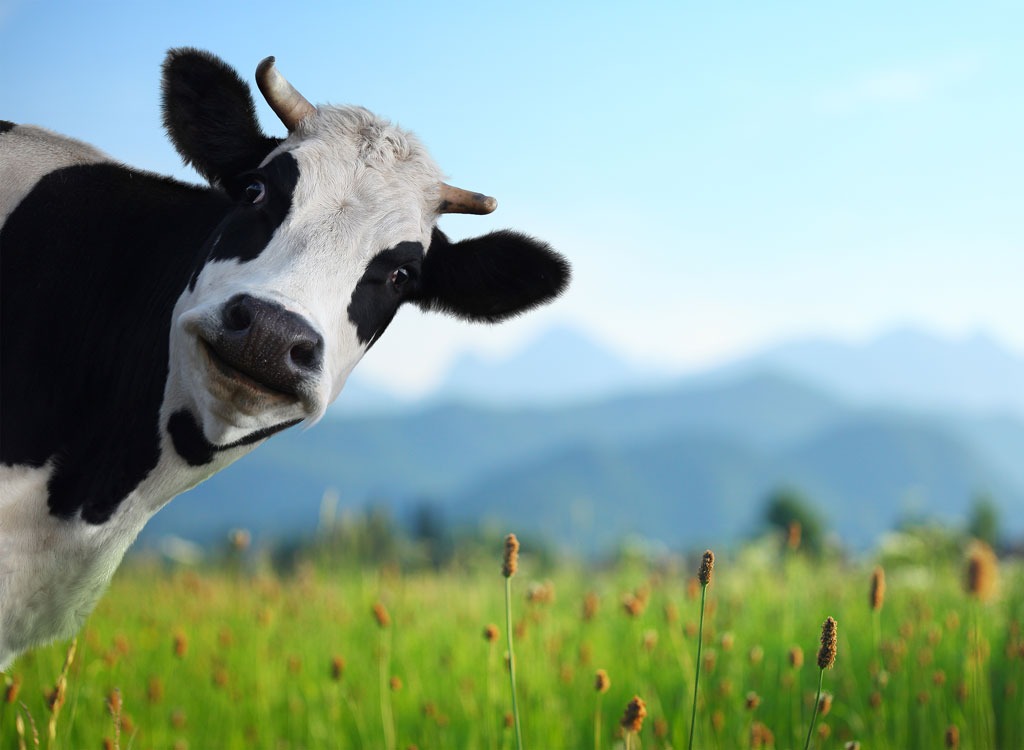
"Grass-fed cattle take a longer time to reach full weight in comparison to grain-fed cattle because grass-fed cattle are allowed to roam on pastures and consume natural grasses," Handy says. "Unlike conventionally-raised meat, grass-fed animals are non fattened on grains in feedlots, nor given growth hormones to speed the procedure." Because grass-fed cattle aren't exposed to unnecessary medication, this, in turn, ensures that antibiotics actually work on our ain immune systems—which y'all'll read more than about below.

"Cattle are meant to eat grass, non feedlot corn and grain," Murray reminds us. "When allowed to graze on grass as they are meant to, cattle are less likely to get sick and require antibiotics. It takes longer for a grass-fed steer to grow to full maturity, and that is also due to our delivery to no added hormones or antibiotics to promote growth." Not only does the lack of growth-inducing hormones and antibiotics assistance the cow achieve maturity naturally—deeming it more than humane for the animals—just information technology besides saves us from condign immune to antibiotics of import for human medicine.
"Antibiotics used for animal production purposes are unnecessary and contribute to the emergence of antibody-resistant bacteria, a serious public health concern," says Urvashi Rangan, PhD, Executive Director of Consumer Reports Food Safety and Sustainability Center. "Infections caused by drug-resistant leaner can exist more difficult to treat and are a major public wellness problem. Because grass-fed cattle eat only forage, poor health that tin ascend from grain-intensive diets is prevented. In addition, pastures can only feed herds of a certain size, and in a properly managed pasture, the stressful and crowded disease-promoting conditions of the feedlot are eliminated. Healthier, less stressed animals need fewer antibiotics and other drugs to stay salubrious." In unproblematic terms, happy cows yield better meat.
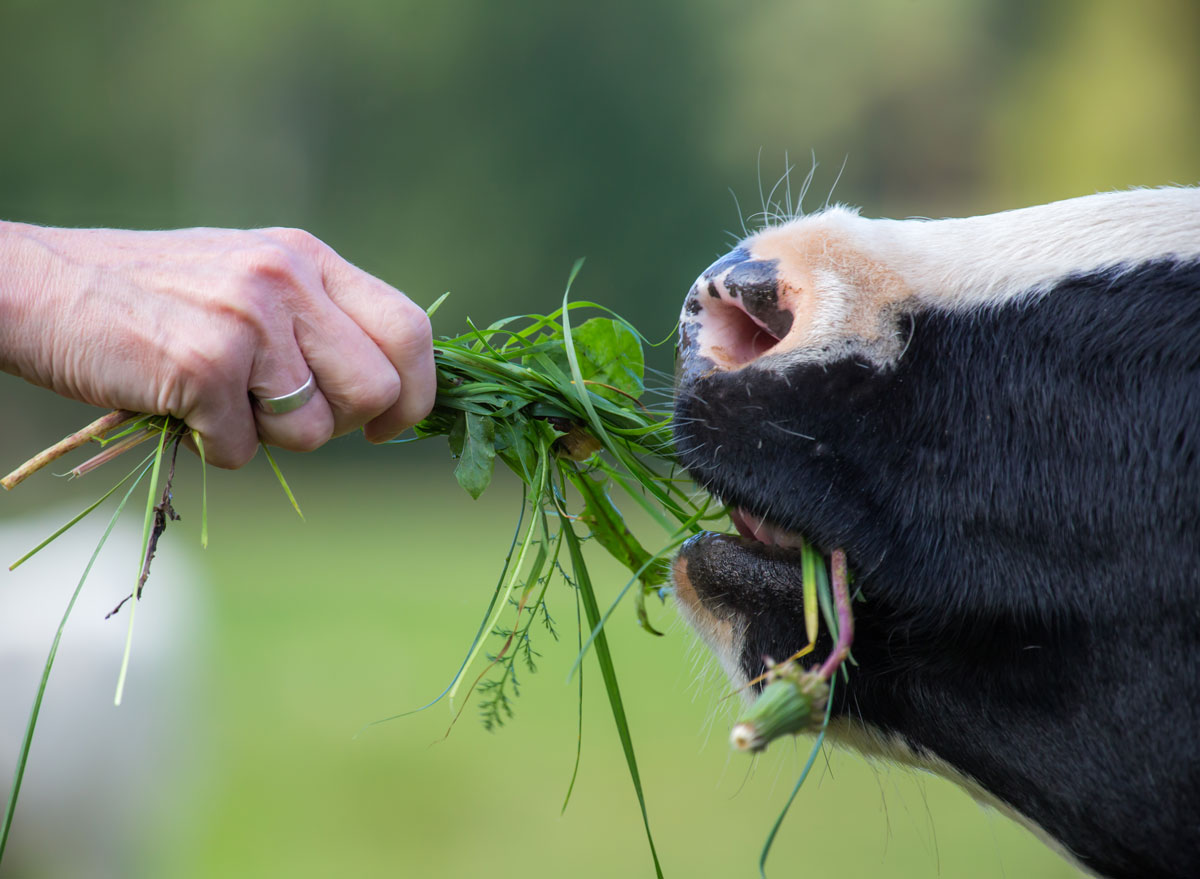
It's no secret that raising cattle takes a huge toll on the surround. About 460 gallons of h2o are required to produce a mere quarter pound of beefiness—which is nearly what you'd detect in a McDonald'southward Big Mac—as well as contributes to deforestation and greenhouse gasses. However, those environmentally-detrimental repercussions are generally relevant to grain-fed meat.
"Well-managed cattle that are moved around different pastures tin can sequester (store) carbon and assistance to mitigate climate alter," Mike Murray exclaims, enlightening u.s.a. on how raising cattle responsibly can become a solution to climate change rather than a goad. "By moving the cattle effectually, the microbiota and root systems stay intact, assuasive the soil to sequester more carbon and reduce greenhouse gas emissions," Murray says.
And Dr. Rangan agrees: "Managing cattle carefully to ensure that pastures are grazed moderately means restoring soil quality and cutting greenhouse gases past keeping carbon in the soil as organic matter rather than releasing it into the atmosphere every bit carbon dioxide."
All the same, if farmers keep to utilise conventional meat farming techniques, that can spell bad news for Mother Nature. "If carbon continues to increase at the rate information technology is now, this will increase the temperature of the World, standing to disrupt wildlife and their habitats, inducing extreme weather, and many other negative impacts on our Globe," Murray says.

"Most grain-fed beef is finished off with a nutrition including corn. This creates a slightly sweeter flavor and much more marbling," clinical nutritionist Tara Coleman, CN, states. "When a steak cooks, the fat from this marbling melts into the meat, creating a much more tender cut. Grass-fed tends to sense of taste leaner and quite only more than similar meat. Once more, this is because of both the cow's diet and the subsequent lower fat content."
What's more, beef, much like wine, contains terroir. Terroir is how a particular region'due south climate, soils, grasses and aspect (terrain) affect the gustation of a natural product—in this case, the beef, Murray tells us. Grass-fed dairy too tastes differently from dairy made with grain-fed cows. Just test information technology for yourself: try a spoonful of Maple Hill Organic grass-fed yogurt against a spoonful of Dannon's and y'all'll taste the difference!
hernandezpaind1973.blogspot.com
Source: https://www.eatthis.com/grass-fed-meat-facts/
0 Response to "Gristle Found in Grass Fed Beef"
Post a Comment